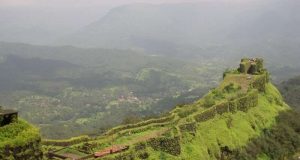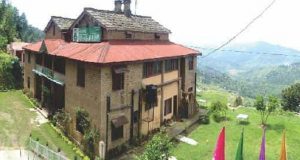Sree Padmanabhaswamy Temple, Thiruvananthapuram
Temples occupy an important place in the landscape of India. Temples serve more than just a place of worship for the people. Many festivals are celebrated and religious events are organized in the temple premises. Considered to be the most sanctified places of all, these religious and spiritual centres register millions of visitors on a regular basis. And the more a temple is older, the more significant it becomes for the locality or town where it is built. Sri Padmanabhaswamy Temple of Kerala can be described as one such temple which occupies an important place in the history of the state and a centre where devotees can be seen throughout the year paying their homage to the temple deity and admiring its structural beauty.
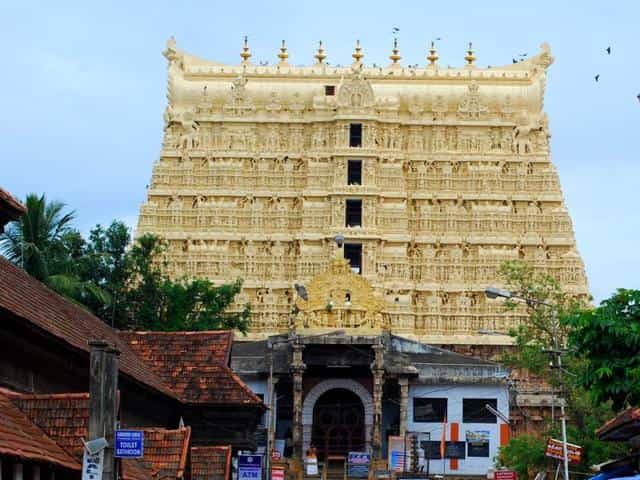
Location
Sri Padmanabhaswamy Temple is located in the city of Thiruvananthapuram, the state capital and a beautiful city adorned with greenery all around.
History
In the ancient period, a sage named Vilvamangalathu Swamiyar was praying to please Lord Vishnu. Vishnu arrived but as a mischievous child and broke the Shila (a representation of Vishnu) and ran away. The sage became furious and ran after the boy and finally spotted him at Ananthankadu, where he witnessed the boy merging with a tree after which the tree fell to the ground. It was named as Anantha Sayana Moorti (the reclining idol of Vishnu on a tree).
The site where this event occurred is the place where the temple was constructed. Several households of the vicinity and the owner of the site, along with the ruler of the region supported the cause and contributed their efforts in the construction. One of the two owners of the plot was appointed as the Tantri.
The name of the city is derived from the temple itself. Thiruvananthapuram translates to the Adobe of Lord Anantha; Anantha referring to the Lord himself.
Structure
The Gopuram or the entrance tower of the temple was added to the complex in 1566. It rises to a height of 100 feet and is a seven-tier giant structure. The water tank seen beside the temple is known as the Padma Theertham, which translates to “Lotus Spring”.
Near the Gopuram, there is a hall which was earlier used for organizing dance events. It is named as Naatak Shala or the hall of drama.
Inside the temple, the visitors can see 365 pillars made out of granite-stone and decorated with intricate carvings, depicting the mastery of architects and sculptors of that period. The corridor leads to the sanctum sanctorum, where the main shrine of the deity is seen reclining on Adi Shesha. A Shivlinga can be seen below the right hand of the deity. Idols of Vishnu’s wives, Sridevi and Bhudevi can be seen.
A devotee has to stand upon the Mandapa for worship and get a sight of the deity. Other shrines of the temples are dedicated to Sree Krishna Swami and Sree Yoga Narasimha. Lord Narasimha was given the task of protecting Chamber B, where an idol of the main deity is kept.
Festivals and Traditions
Many festivals are celebrated at Sree Padmanabhaswamy Temple, which are attended by thousands of devotees. Two of the festivals, Alpashy and Painkuni festival go on for a period of ten days. The former is celebrated during October or November, while the latter is celebrated in the month of March or April.
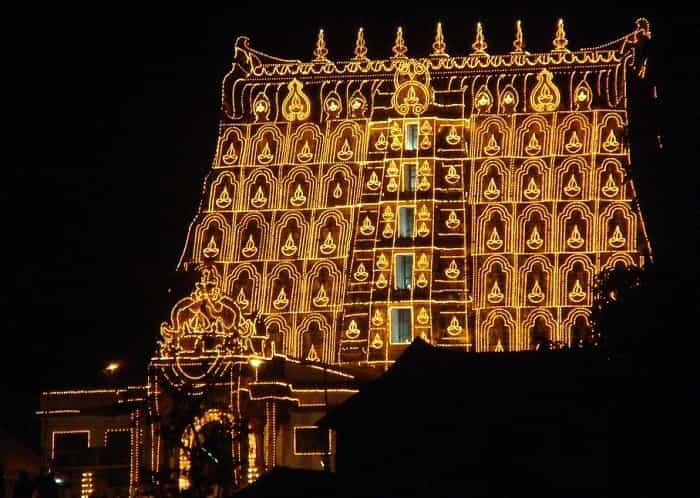
The tradition followed during both the events is the procession carried out by the Maharajah of the Royal Family of Travancore, during which he carries the idols of temple deities for the ritual of immersing the idols in sea water for purification.
A unique festival celebrated here is known as Laksha Deepam or the festival of one lakh lamps. It is celebrated once in every six years, prior to which the recitation of ancient texts and chanting is performed.
The festival of Navratri is celebrated along with the Swathi music festival every year. Other festivals celebrated in the temple include Swargavathil Ekadasi, Kalabham, Shivaratri, Shree Ram Navami, Niraputhari, Murajapam, Thiruvonam and many more.
There is a specific dress code for the devotees without which they are denied entry into the temple. Men are required to dress in a dhoti without any shirt. Dhotis can be rented outside the temple and can also be worn over pant or jeans.
Women must dress either in a Saree, skirt and blouse or a half Saree.
[You may also like to know about Famous Festivals in Kerala]
Timings and Schedule
The temple shrine remains open for Darshan from 03:30 a.m. to 04:45 a.m., 06:30 a.m. to 07:00 a.m., 08:30 a.m. to 10:00 a.m., 10:30 a.m. to 11:10 a.m. and 11:45 a.m. to 12 noon.
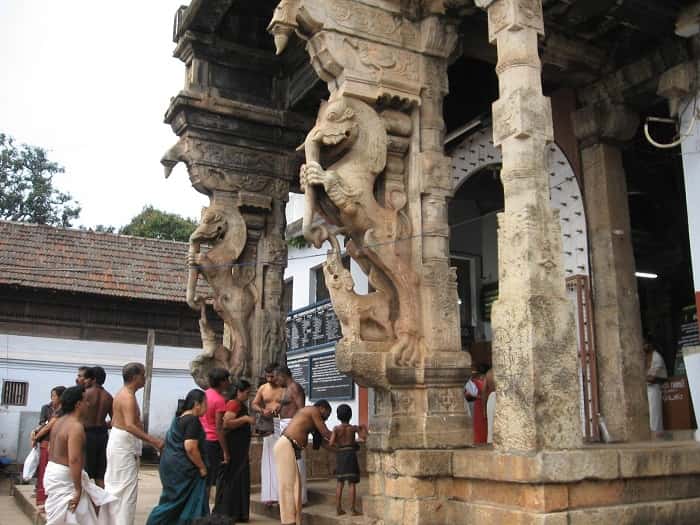
The evening timings are 05:00 p.m. to 06:15 p.m. and 06:45 p.m. to 07:00 p.m.
The timings and schedule may change during festivals and other occasions.
How to Reach
Sree Padmanabhaswamy Temple is located at a distance of approximately one kilometre from Thiruvananthapuram railway station and six kilometres from the city airport. The airport of Thiruvananthapuram offers regular flights to Indian cities as well as foreign destinations, including but not limited to Maldives, Sri Lanka, Middle East, etc. It is thus easier for international tourists to directly arrive to the city and visit the temple and other places of interest.
The city of Thiruvananthapuram is well connected through National Highway 47, which runs from Salem to Kanyakumari. Within the city, visitors can travel in public transport modes such as buses, auto-rickshaws, taxis, or private cabs.
